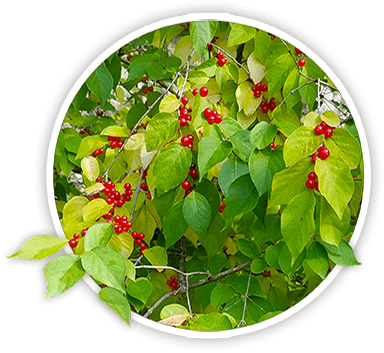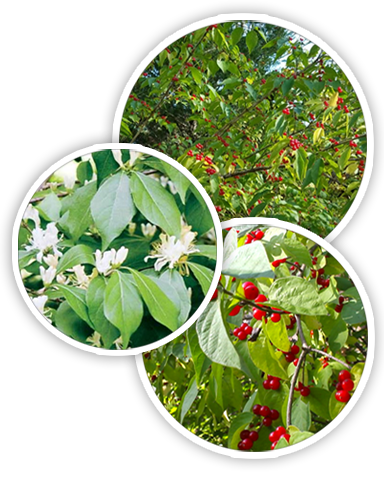
Invasive Bush Honeysuckle Wreaking Havoc in Missouri!
Not to be confused with Missouri’s native twining honeysuckle vines, the invasive East Asian species bush honeysuckle was originally introduced for landscaping and erosion control. Unfortunately, this non-native plant not only strangles native plants and trees, but it also only enables erosion, leaving a wake of ecological destruction in its path.
We have been working with a variety of partners and volunteers to eradicate this plant throughout the greenways and along stream banks.
Here's what you need to know so you can help stop its spread!
Why is bush honeysuckle harmful?
- Bush Honeysuckle “leafs out” early in the spring and remains late into fall, giving it a competitive advantage over native plants
- It forms a thick under-story that limits sunlight to native plants; choking out their growth
- It competes with other plants for soil moisture and nutrients
- It competes with native plants for pollinators, resulting in fewer seeds set on native species
- The red berries of honeysuckle are like “junk food” for migrating birds; does not provide the high-fat content they need for their long flights of migration
How does it spread?
- Aggressive self-seeding in the area surrounding the plant
- Seeds are also spread by birds and small mammals, the seeds can germinate in the shade of a forest canopy
How can you identify bush honeysuckle?
- Dense shrubs from 3 to 15 feet tall
- The leaves are directly opposite each other on the stem (not staggered)
- 1-inch long fragrant paired tubular flowers with narrow petal; white flowers that later become yellowish
- Red or orange berries near the base of the leaves in the fall
- Stems are hollow, light tan color with arching shape and vertical lines on bark
- First to leaf out in the spring and last to lose their green color in the fall
How do you get rid of it?
Hand pulling small plants
Bush honeysuckle has a shallow root system, so seedlings and small plants can often be removed easily by hand pulling, especially when soil is moist. However, looks can be deceiving. Plants that have been previously mowed and re-sprouted can appear small, but have large root systems.
The cut-stump or stem method
The most effective and efficient method of removing larger bush honeysuckle plants is to cut the stem as close to the ground as possible and immediately apply an appropriate herbicide after cutting.
Dig out roots
Honeysuckle bushes can be removed by digging with shovels, pick axes, and other tools, but this is very labor intensive and causes extensive soil disturbance. Digging is a suitable approach for someone who wants to remove bush honeysuckle from their garden and replace it by planting non-invasive alternatives.
Help us remove honeysuckle along the greenways!
Great Rivers Greenway partners with local organizations to offer volunteer opportunities throughout the region to restore and beautify the greenways -including the removal of Bush Honeysuckle and other invasive plants.
To stay informed about upcoming volunteer events, register for our email newsletter and we will let you know when opportunities are available. You can also contact us at info@grgstl.org if you have any questions.
